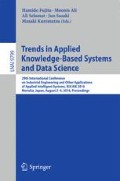Abstract
Forensics is a science discipline that deals with collecting evidence in crime scene investigation. However if we’re dealing with signatures, the crime scene is the signed paper itself. Therefore, for any kind of investigation, there should be a sample and a master signature to benchmark the similarities and differences. The characteristics of a master signature could easily be identified by forensics techniques, yet it is still infeasible for electronic signatures due to ease of copy-pasting. Through the emerging touchscreen technologies, the features of the signatures could be stealthily extracted and stored while the user is signing. Given these facts, the novelty we put forward in this paper is a feature extraction method using short time Fourier transformations to identify frequencies of a simple master signature. We subsequently presented the spectrogram analysis revealing the differences between the original and fake signatures. Finally a validation method for the analysis of the spectrograms is introduced which resulted in a significant gap between real and fraud signatures for various window sizes.
Access this chapter
Tax calculation will be finalised at checkout
Purchases are for personal use only
References
Saikia, H., Sarma, K.C.: Approaches and issues in offline signature verification system. Int. J. Comput. Appl. 42(16), 45–52 (2012)
Kumar, S.: A survey on handwritten signature verification techniques. Int. J. Adv. Res. Comput. Sci. Manage. Stud. 3, 182–186 (2015)
Baltzakis, H., Papamarkos, N.: A new signature verification technique based on a two-staged neural network classifier. Eng. Appl. Artif. Intell. 14, 95–103 (2001)
Biswas, S., Kim, T., Bhattacharyya, D.: Features extraction and verification of signature image using clustering technique. Int. J. Smart Home 4(3), 43–56 (2010)
Nguyen, V., Blumenstein, M., Leedham, G.: Global features for the off-line signature verification problem. In: 10th International Conference on Document Analysis and Recognition, 2009. ICDAR 2009. IEEE (2009)
Madasu, V.K., Lovell, B.C.: An automatic off-line signature verification and forgery detection system. In: Pattern Recognition Technologies and Applications, Recent Advances, pp. 63–89 (2008)
Qiao, Y., Liu, J., Tang, X.: Offline signature verification using online handwriting registration. In: IEEE Conference on Computer Vision and Pattern Recognition CVPR 2007, Minneapolis (2007)
Al-Omari, Y.M., Abdullah, S.N.H.S., Omar, K.: State-of-the-art in offline signature verification system. In: 2011 International Conference on Pattern Analysis and Intelligent Robotics (ICPAIR). IEEE (2011)
Arya, M.S., Inamdar, V.S.: A preliminary study on various off-line hand written signature verification approaches. Int. J. Comput. Appl. 1(9), 50–56 (2010)
Pal, S., Alireza, A., Pal, U., Blumenstein, M.: Off-line signature identification using background and foreground information. In: International Conference on Digital Image Computing Techniques and Applications (DICTA) (2011)
Wang, N.: Signature ıdentification based on pixel distribution probability and mean similarity measure with concentric circle segmentation. In: Fourth International Conference on Computer Sciences and Convergence Information Technology, 2009, ICCIT 2009 (2009)
Pal, S., Pal, U., Blumenstein, M.: Off-line English and Chinese signature identification using foreground and background features. In: The 2012 International Joint Conference on Neural Networks (IJCNN), pp. 1–7. IEEE (2012)
Tolosana, R., Vera-Rodriguez, R., Fierrez, J., Ortega-Garcia, J.: Feature-based dynamic signature verification under forensic scenarios. In: 2015 International Workshop on Biometrics and Forensics (IWBF), IEEE (2015)
Lopez-Garcia, M., Ramos-Lara, R., Miguel-Hurtado, O., Canto-Navarro, E.: Embedded system for biometric online signature verification. IEEE Trans. Ind. Inform. 10(1), 491–501 (2014)
Forhad, N., Poon, B., Amin, M.A., Yan, H.: Online signature verification for multi-modal authentication using smart phone. In: Proceedings of the International MultiConference of Engineers and Computer Scientists (2015)
Kumar, S., BH, V.P.: Embedded Platform For Online Signature Verification. IJSEAT 3(4), 126–131 (2015)
Bhateja, A.K., Chaudhury, S., Saxena, P.K.: A robust online signature based cryptosystem. In: 2014 14th International Conference on IEEE Frontiers in Handwriting Recognition (ICFHR) (2014)
Alpar, O.: Keystroke recognition in user authentication using ANN based RGB histogram technique. Eng. Appl. Artif. Intell. 32, 213–217 (2014)
Alpar, O.: Intelligent biometric pattern password authentication systems for touchscreens. Expert Syst. Appl. 42(17), 6286–6294 (2015)
Alpar, O., Krejcar, O.: Biometric swiping on touchscreens. In: Computer Information Systems and Industrial Management (2015)
Alpar, O., Krejcar, O.: Pattern password authentication based on touching location. In: Intelligent Data Engineering and Automated Learning–IDEAL 2015 (2015)
Acknowledgment
This work and the contribution were supported by project “SP/2016/2102 - Smart Solutions for Ubiquitous Computing Environments” from FIM, University of Hradec Kralove.
Author information
Authors and Affiliations
Corresponding author
Editor information
Editors and Affiliations
Rights and permissions
Copyright information
© 2016 Springer International Publishing Switzerland
About this paper
Cite this paper
Alpar, O., Krejcar, O. (2016). Hidden Frequency Feature in Electronic Signatures. In: Fujita, H., Ali, M., Selamat, A., Sasaki, J., Kurematsu, M. (eds) Trends in Applied Knowledge-Based Systems and Data Science. IEA/AIE 2016. Lecture Notes in Computer Science(), vol 9799. Springer, Cham. https://doi.org/10.1007/978-3-319-42007-3_13
Download citation
DOI: https://doi.org/10.1007/978-3-319-42007-3_13
Published:
Publisher Name: Springer, Cham
Print ISBN: 978-3-319-42006-6
Online ISBN: 978-3-319-42007-3
eBook Packages: Computer ScienceComputer Science (R0)

